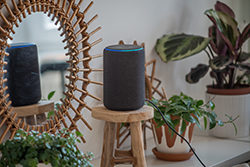Realizing the True Opportunity of IoT
By: Tim Armstrong

The topic of the Internet of Things (IoT) and its impact on nearly every market is dominating conversations across various technology sectors. According to IHS Markit, the number of connected IoT devices will increase 12 percent annually to reach 125 billion by 2030. As the general public realizes the convenience that IoT is promising through connected thermostats, smart refrigerators and smart cars, technologies that bring smart home and smart cities to fruition are not solely responsible for the significant projections of the IoT market. Motivators driving rapid adoption of IoT vary across markets, but there is recognition of value among all, specifically the enterprise.
As we consider the “things” of IoT, devices such as Amazon’s Alexa align perfectly with the definition of an end-point device responsible for the increasing number of connected devices demanding support from the network. Network operators are constantly evaluating the impact of devices and technologies such as 5G, but digital transformation is penetrating nearly every market, existing device and process, revolutionizing the way we work and live. This penetration is responsible for the expected impact of IoT, because we are seeing the amalgamation of established technologies and markets adopting IoT into their solutions and services to increase their legacy technologies’ capabilities.
Connectivity isn’t new, so what is?
The opportunity that IoT presents is vastly viewed as linking endpoints and supporting a network of Internet-connected devices that can connect and exchange data, but connectivity is hardly what should be perking up our ears. In fact, GSMA reports that connectivity will be responsible for only five percent of the total IoT revenue opportunity. The true stake that IoT holds in revenue generation is in the amount of data that IoT generates, and enterprises are quickly becoming aware of the significance.
As enterprises realize the value of data-driven analytics, traditional communication and collaboration endpoint devices are advancing to become IoT devices. Headsets, cameras and conference room equipment have long been connected to the network, so understanding the impact of IoT on Unified Communications (UC) and the relationship between the two may not be obvious. Even though a majority of these devices have always been connected to the network, it’s only very recently that they’re becoming IoT endpoints.
Adoptions of IoT and UC are advancing operational efficiency
As the UC market is expected to reach $143.49 billion by 2024, the value of the solution to the enterprise is undeniable. Typically, the adoption of UC is to benefit internal and external communications, streamline processes, and accelerate collaboration, overall supporting operational efficiency. By marrying UC and IoT, UC is shifting from a set of functional applications to a collection of capabilities and insights. Initially, IoT-enabled applications in the UC industry will be driven by the more obvious solutions such as usage adoption and quality reporting, but future functionality will assist with everything from workplace safety to facility planning, truly transforming industries from manufacturing to healthcare.
IoT use cases
To understand the power of IoT and UC, it is helpful to look beyond tracking the use of conference rooms and employee productivity and instead to the previously mentioned future functionalities that will benefit from the integration. For example:
- Heart monitors with the ability to alert of health issues via SMS can reduce the number of hospital trips and improve quality of life. Most importantly, connectivity of the endpoint device enables potentially lifesaving alerts.
- In factories, IoT certainly will impact productivity as well as influence areas such as safety. By supporting navigation and storage and providing data that can be traced back to incidents resulting in safety failures, combining UC and IoT equips factories with tools to communicate vital information for employees and the business.
- Product developers allocate time and dedication to collecting data and evaluating information in multiple stages of development. UC alongside IoT enables real-time data analysis, allowing for expedited problem resolution, which will in turn reduce the time needed to bring new products to market.



















